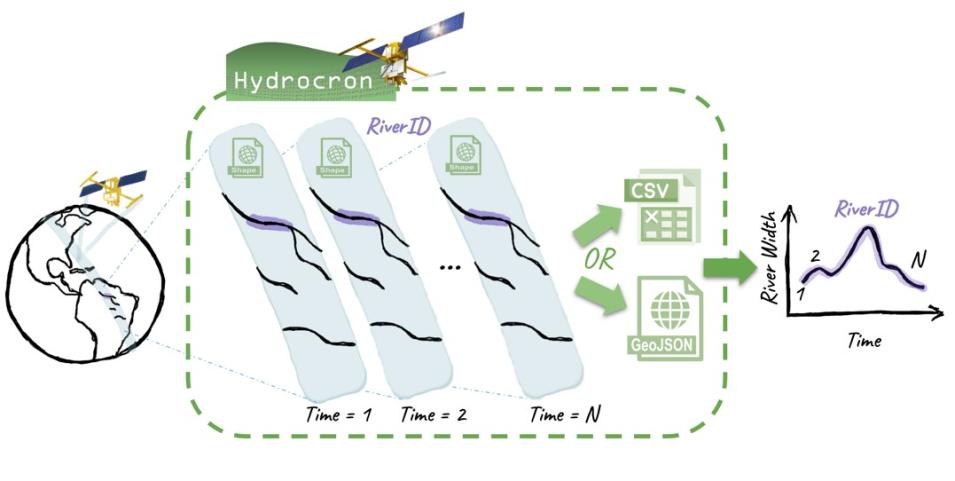The Surface Water and Ocean Topography (SWOT) satellite collects data on the global ocean and the major water bodies that comprise Earth's freshwater resources. Over time, these data will make it easier for researchers to analyze how waterbodies are responding to climate change and the impacts of human activity on Earth's freshwater systems.
Yet as the SWOT mission goes on and the volume of data grows, finding, accessing, and analyzing specific files pertaining to a particular body of terrestrial water or water feature may become more challenging.
"As SWOT orbits the planet, it will cross a continent at a particular time and observe the rivers, lakes, reservoirs, and wetlands beneath it. The data collected during that pass are contained in one data file for each water body type. Then, SWOT will come around later and do another pass at a slightly different angle and time over that area, and that will be another file," said Victoria McDonald, scientific applications software engineer at NASA's Jet Propulsion Laboratory (JPL) in Southern California. "So, if users want to look at one river or one section of a river and see how it has changed over time, they'll need to find all of the individual files at all of the individual times the satellite passed over. That can be hundreds of files, and users may find it difficult to find and process all of the files they need."
SWOT river data are archived and distributed as zipped shapefiles, which are not cloud optimized. Further, the files are organized by passes of the SWOT satellite over the continents, so each zip file contains data on river features observed at a specific time. This means that to analyze the way a particular water body has changed over time, users need to extract data for a single feature from a large number of files in the archive.

